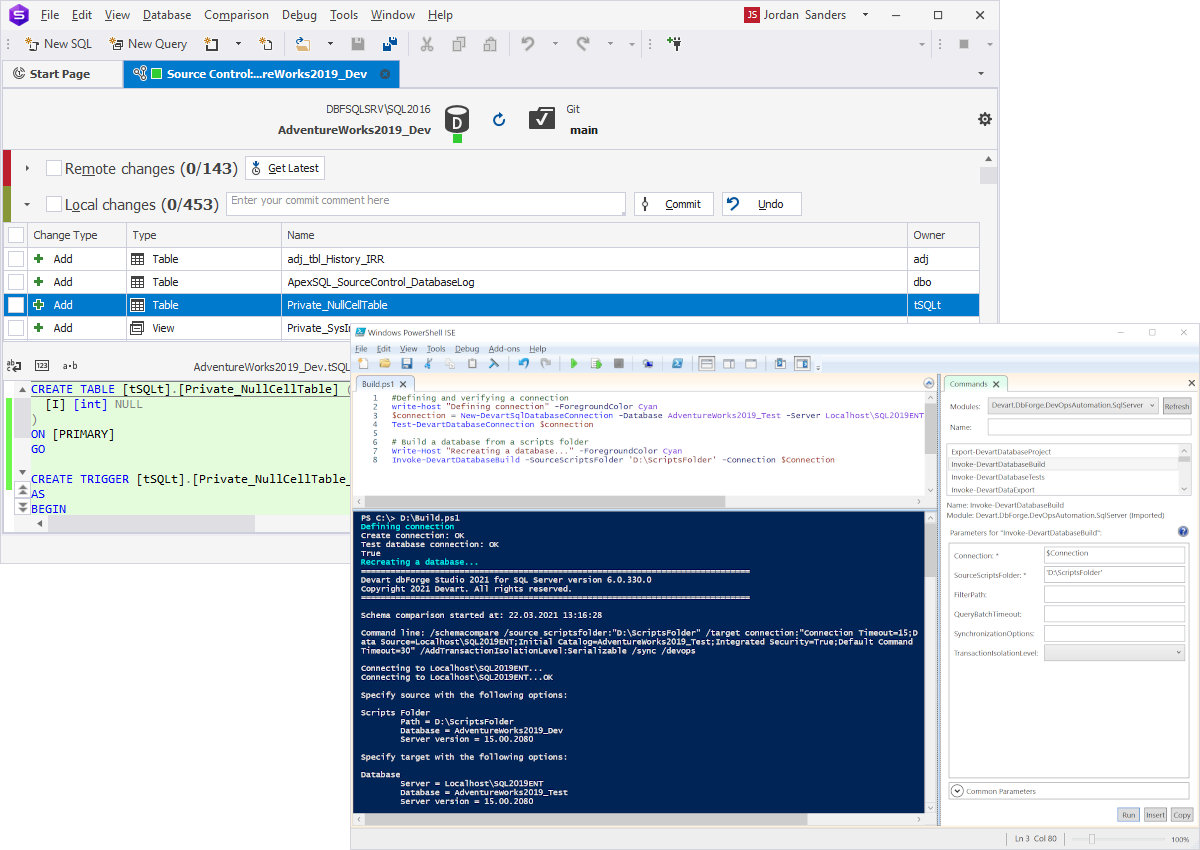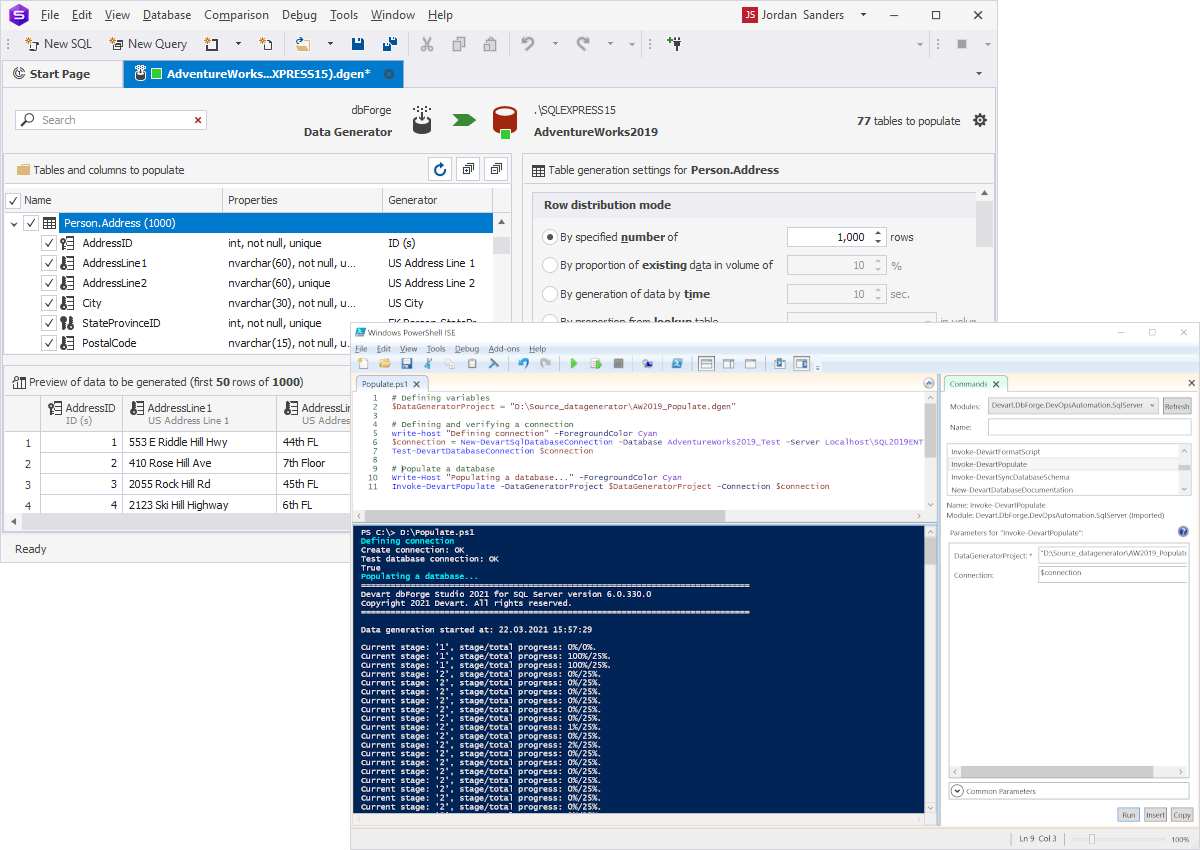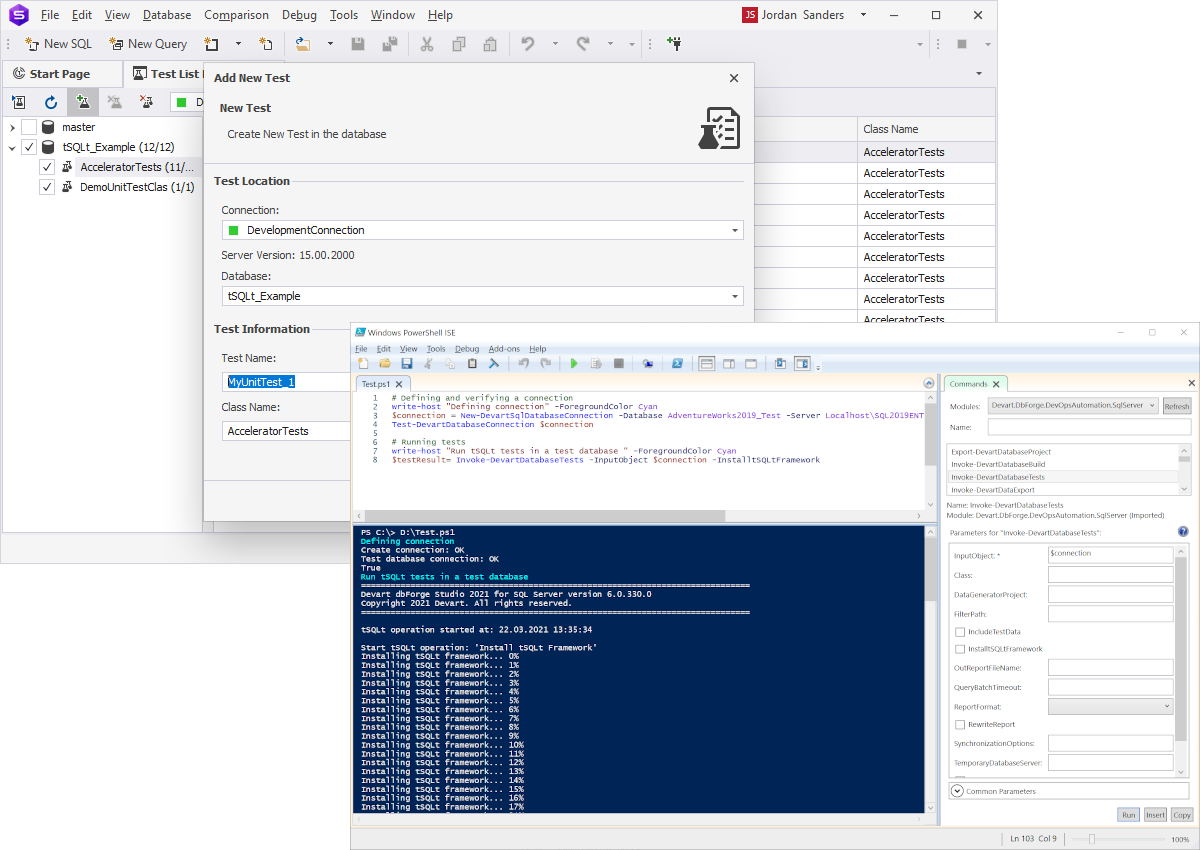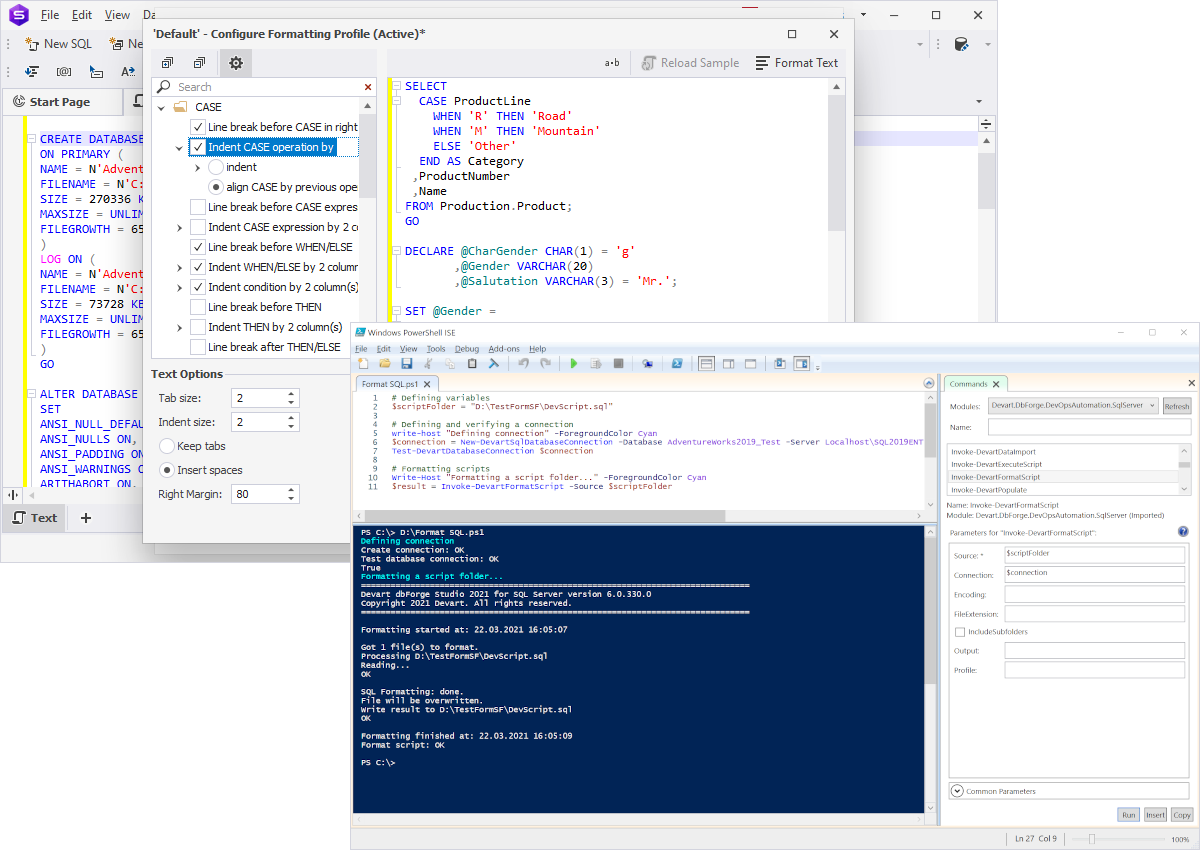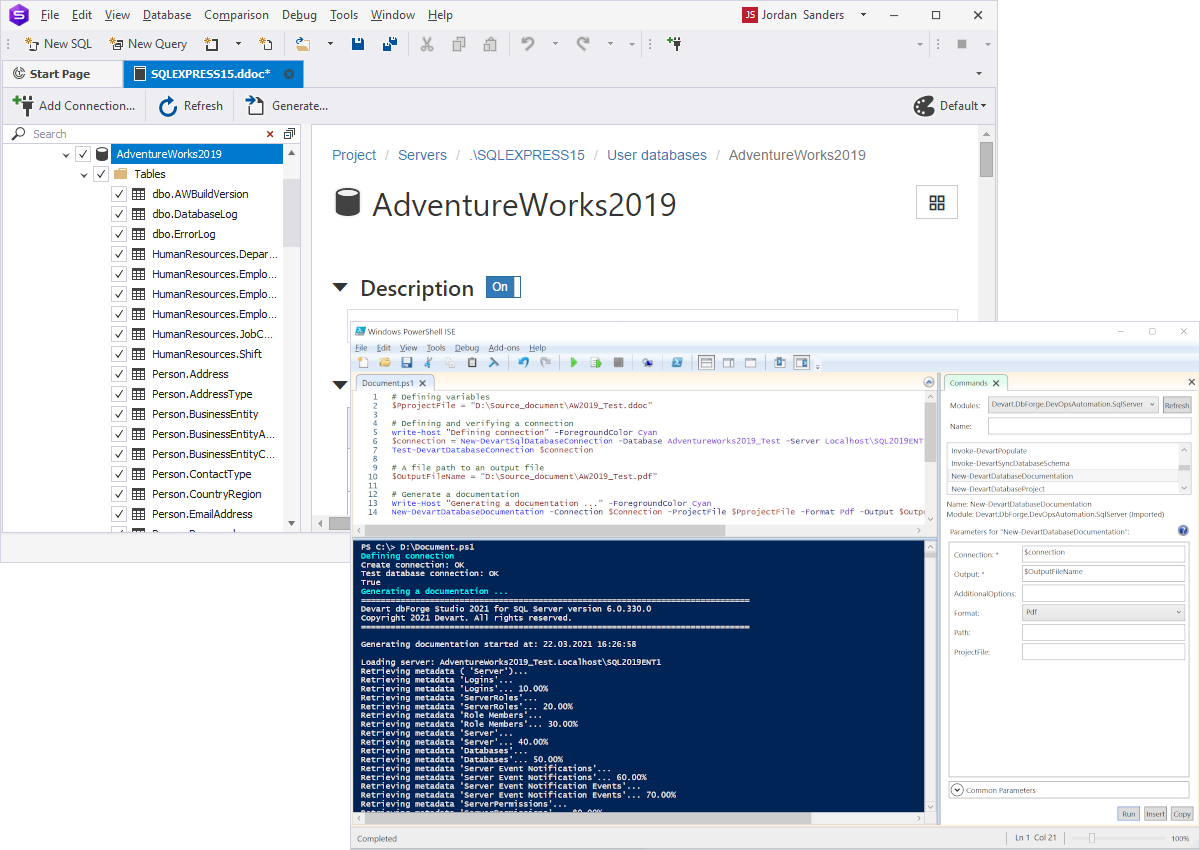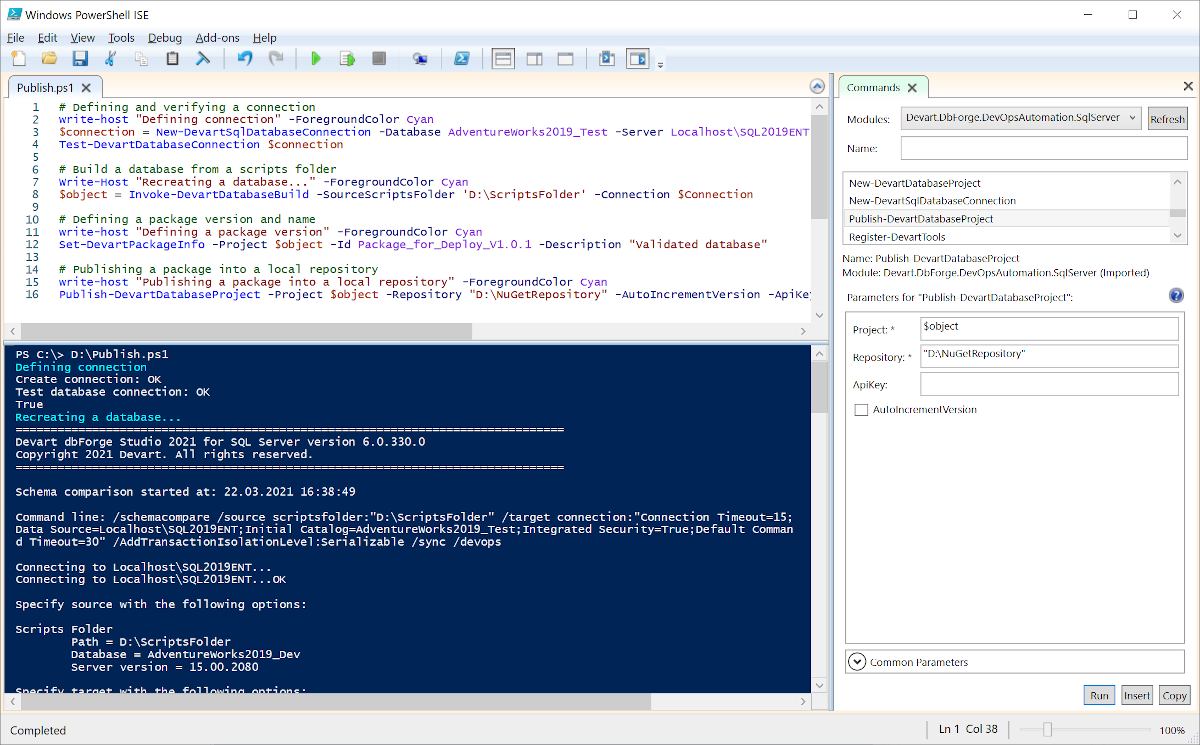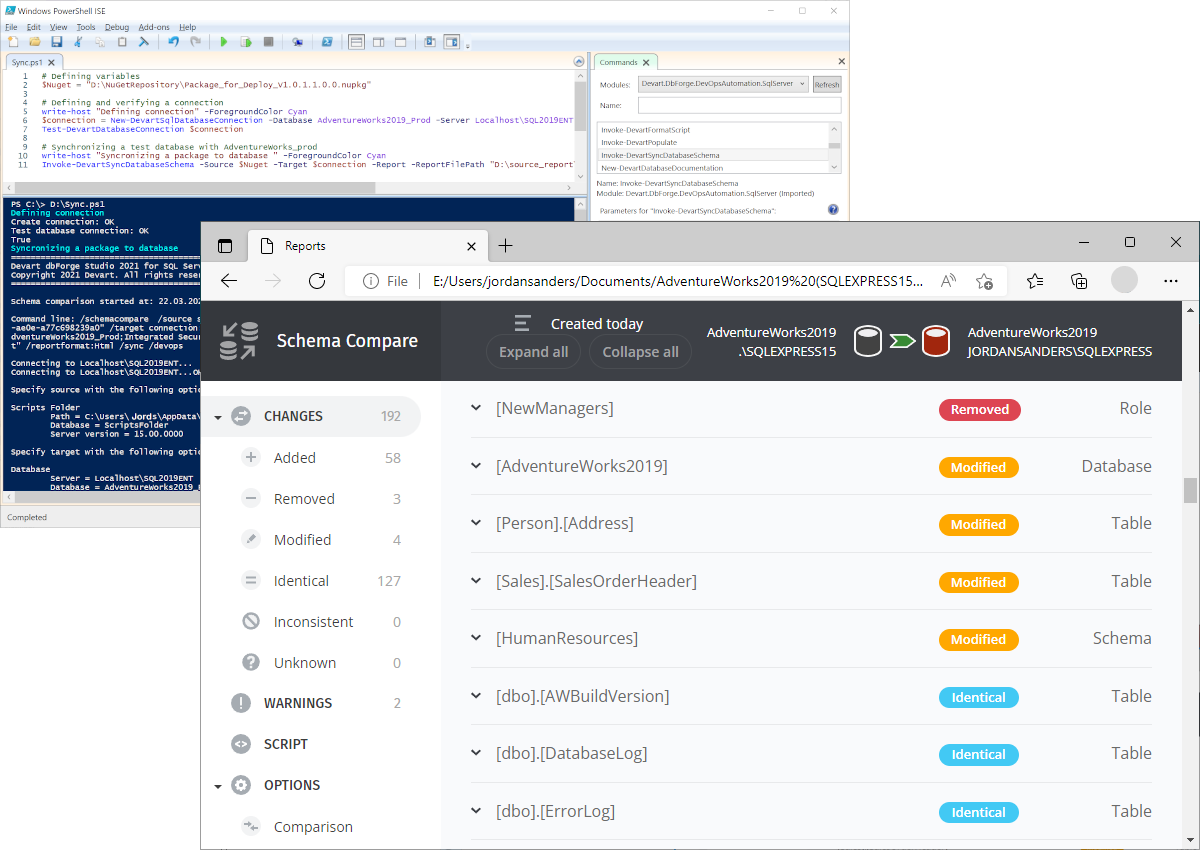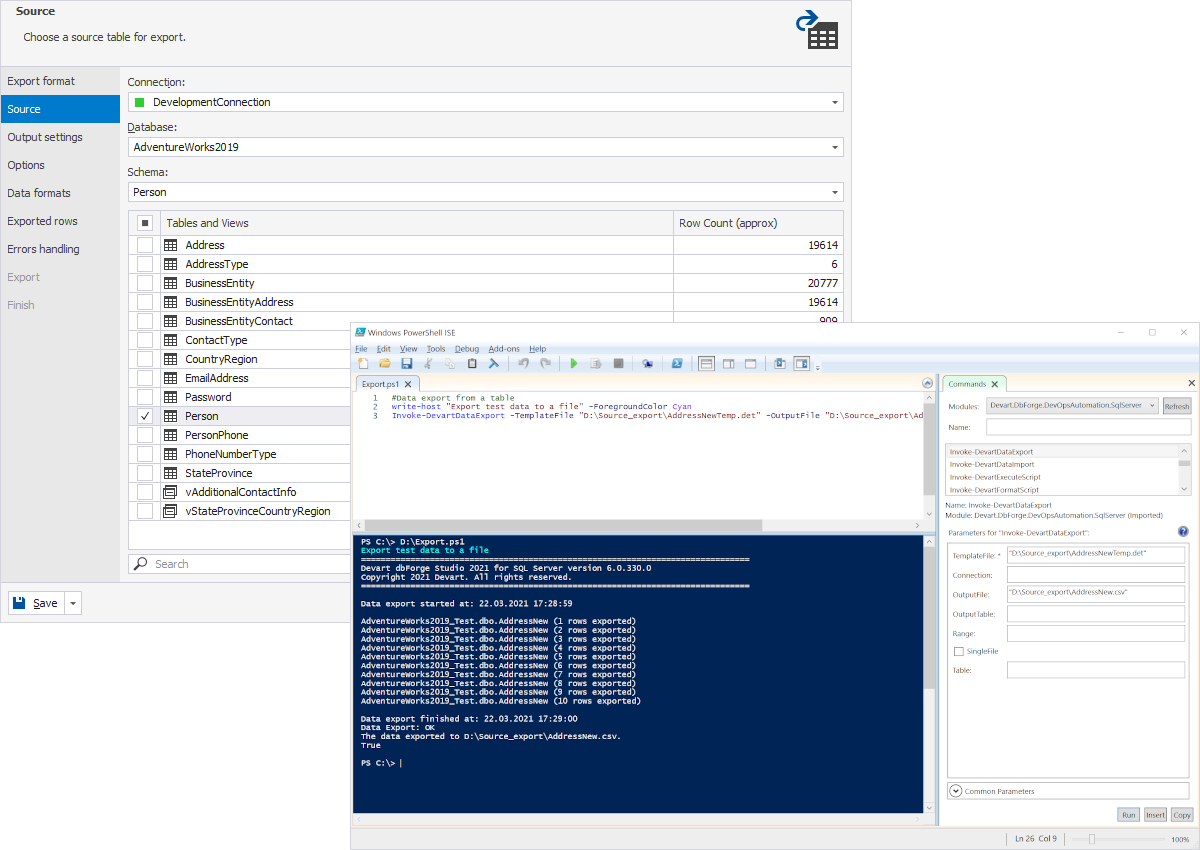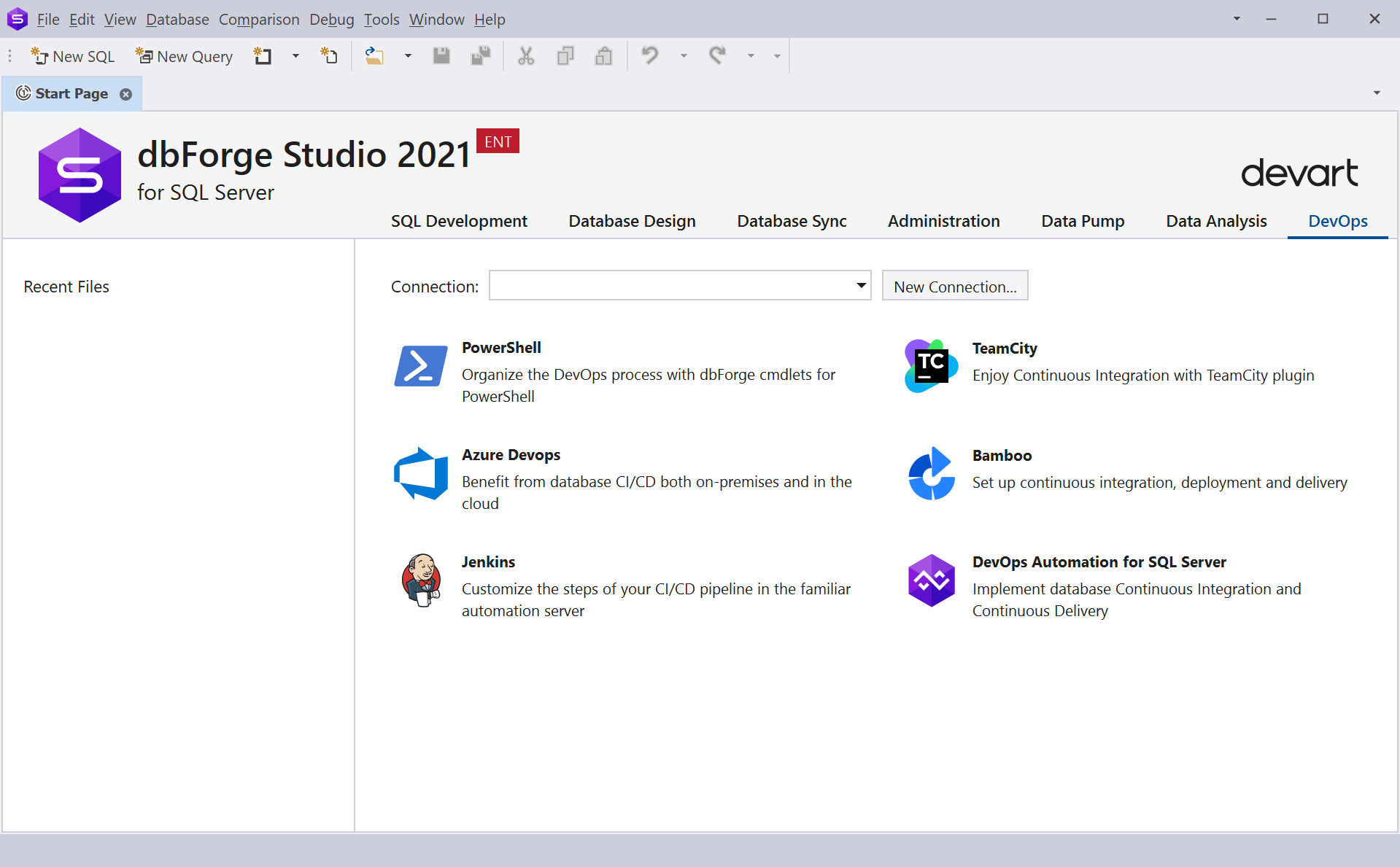Development
Having made changes to SQL code, developers commit them to a shared repository which is then synchronized with the central codebase. Further on the application or feature is built from the code extracted from that codebase and verified by using the specially written unit tests. Database Continuous Integration is a key to the automation of each and every step that follows the database development process.
Continuous Integration
Database Continuous Integration is a development practice that implies that even the slightest code changes are to be integrated into a shared repository and tested every time they are made. SQL Server Continuous Integration allows detecting and eliminating bugs in the early stages of development, which drastically cuts the gap between code development, testing, and release.
Continuous Delivery
Database Continuous Delivery ensures smooth and frequent releases. With the database release automation, you can always feel certain of each code alteration. The database release management becomes less risky and stressful, and the frequency of releases boosts dramatically. The higher frequency of updates makes a product more flexible, reliable, and, consequently, more attractive to customers. Even if some issues somehow appear on production, they can be easily eliminated with a timely and simple hotfix update.
Operations
Proactive and intelligent SQL Server monitoring and reporting ensures that you can detect, analyze, and eliminate any performance-related issues before they get released to your customers. As a result, the teams spend less time and effort, while you get more customers who are happy with the product they can rely on.

